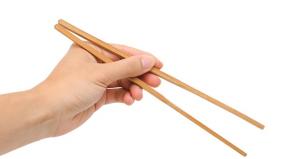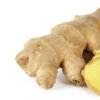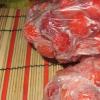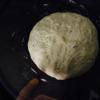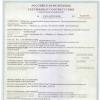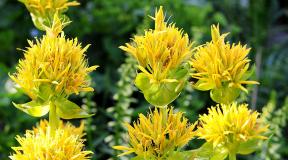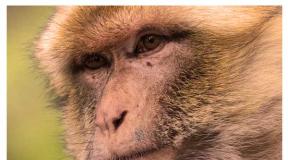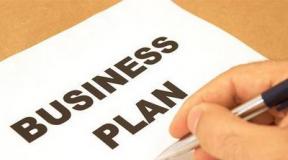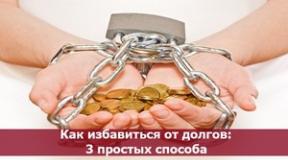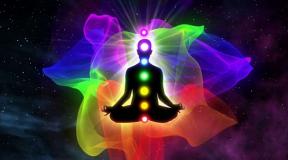Minerals. Properties of minerals Minerals of Pleshakov 3
1. Think and write down which of your needs are met by minerals.
Our car runs on gasoline, which is made from oil, we cook food on a stove that runs on gas to make barbecue in the country, we need coal, dishes are made of clay
2. Practical work "Exploring minerals."
Objective: identify minerals and establish their properties.
Equipment: samples of minerals issued by the teacher; atlas-determinant "From the earth to the sky".
Progress of work (according to the tasks of the textbook).
- Consider a sample of a mineral. Guess the name of the textbook based on the illustrations.
- Set and write down in the workbook the properties of the mineral: solid or liquid, color, transparent or opaque, dense or loose. Ask the teacher if the fuel is a mineral or not.
- Think about where this mineral is used. On what properties is its application based?
Fill the table.
Evaluation of the work performed (whether the goal was achieved): goal achieved
Presentation: inform the class about the results of the work, listen to other messages. Discuss as a group how you can identify the minerals you have studied.
3. Question Ant wants to know how minerals are used. Mark with a "+" sign in the appropriate column. Do this first with a simple pencil.

4. The teacher asked Seryozha to talk about minerals. But he could only say one sentence about each. Guess what minerals he had in mind. Write their names in the boxes.

5. Show with arrows which photographs show a quarry, a mine, a drilling rig.

6. Our Parrot, a lover of secrets and riddles, has come up with a task for you. A treasure is hidden in an old mine. Find the path to the treasure and mark it with an arrow. Start your journey from the elevator.
The path is indicated in the figure by a thin blue line.

7. On the instructions of the textbook, find out in the local history museum what minerals are mined in your area. Write down their names
limestone, oil, sand
8. Here you can write down the outline of your report about the mineral or the basic information about it.
1. Name of the mineral
2. Where is mined
3 Mineral properties
4. Using it in business activities
Aluminum ore - bauxite
The well-known metal aluminum in its pure form does not occur in nature. It is mined from aluminum ores - minerals containing various compounds of this substance. The most famous and widely mined aluminum ore is called bauxite.
In our country, bauxites are mined in the Urals, Siberia, the Baikal region and the Kola Peninsula. There are also bauxite deposits in Hungary, Central and South Africa, Ukraine, Kazakhstan, France and India.
After special treatment, pure aluminum is released from bauxite. It is a very light weight silver-white metal. It is easy to forge, conducts heat and electricity well, and, unlike most metals, is virtually non-corrosive.
Due to its properties, aluminum is widely used in industry. It is used to make dishes (pots, pans, trays, spoons and forks), aluminum foil for baking and packaging, wires, pipes, it is used in the production of microcircuits, paint is made from aluminum, as well as frames for scooters and bicycles, aircraft fuselages and much more. other .

Use the recording when speaking in class. Listen and rate other guys' posts.
In the bowels of the Earth, natural resources are stored - minerals that are of great importance to humans. With their help, people solve almost all their household needs: they build, heat premises, travel by transport, create many useful household items. Let's find out the names and properties of minerals, without which life would not be so convenient and comfortable.
fossil fuels
Fossils that can be used to produce heat and energy are called combustible. These include natural gas and oil.

Rice. 1. Oil production
It is difficult to imagine modern life without fossil fuels, because due to their energy we heat rooms in the cold season, cook food, and drive cars.
Also combustible natural substances include peat, shale, brown and hard coal, anthracite.
ore minerals
Ore or metal minerals are one of the first that the ancient man mastered. Without metal, it is impossible to imagine the industry, because in every house, every person will definitely have a metal object.
TOP 4 articleswho read along with this
Depending on the properties and applications, all metals are divided into several main groups:
- black - this is iron and all its alloys - it is used in the construction of various equipment, ships, aircraft, cars;
- colored - aluminum, copper, nickel and many others - are actively used in astronautics, electrical engineering, aircraft engineering, various precision instruments;
- noble - silver, gold, platinum, palladium - have a unique property - they do not enter into chemical reactions, moreover, they are of high value as precious metals from which jewelry is made;

Rice. 2. Gold is a noble metal
- radioactive - uranium, plutonium, radium and others - are capable of emitting radiation without outside help.
non-metallic minerals
Non-metallic or non-metallic fossils are soft and hard groups of rocks and minerals. To date, more than a hundred such natural compounds are known, and all of them have found their application in various economic and industrial sectors.
Consider a brief description of the properties of non-metallic minerals:
- mining raw materials - asbestos, limestone, mica - rocks, without which it is impossible to imagine the construction industry;
- chemical raw materials - apatite, sulfur, potassium salts - are used in the chemical industry, in the production of mineral fertilizers, ceramics, rubber;
- Construction Materials - marble, gypsum - are used in various fields;
- semiprecious stones - emeralds, rubies, topazes - have a beautiful appearance, are used to create jewelry.

Rice. 3. Diamond is the hardest mineral on Earth
Almost all deposits of useful substances are gradually depleted. If people do not learn to carefully and rationally use natural resources, our offspring may be left without such valuable raw materials.
The purpose of the lesson: To reveal the role of minerals in human activities and show the need for their careful use.
Lesson objectives:
Educational:
- To acquaint with a variety of minerals and some of their properties, methods of their extraction;
- To organize a study by schoolchildren of the main properties of minerals;
- Show their important role in the country's economy.
Development task:
- Development of the ability to analyze and build hypotheses, conclusions, evidence based on the analysis.
- Develop the ability to draw diagrams, tables.
Educational:
- Show the need to protect minerals;
- Maintain awareness of the involvement of each student in the result of joint learning activities.
- Cultivate tolerance.
Lesson type: subject
Lesson form: lesson-research.
Form of organization of educational activities: individually - group , frontal.
Methods: partial search, research.
Terms and concepts: minerals, geologists, deposits, quarry, mine.
Equipment: multimedia projector, screen, hammer, collection of fossils, glass, nail, glass of water, white paper, magnifiers.
Didactic materials: teacher's presentation, rocks, instruction card for studying the properties of minerals.
During the classes
Stage 1. Organizing time. Psychological mood.
Look at each other, with your eyes, wish your friend a good working mood for the whole lesson. Now look at me. I also wish you all an interesting lesson.
Stage 2. Motivation and goal setting.
Look at our Earth. The nature of our Earth is rich and diverse. Some riches are on the surface of the Earth, others are hidden deep in the Earth. (slides 1, 2, 3).
What tricky secrets
Thaw common items:
Minerals sparkle in the salt shaker!
Snowflakes are crystals!
The foil that hid the candy -
The metal is the same as in rockets.
It hides its simple clay,
Sister of sapphire and ruby!
And if you stumble on a stone,
Don't think it's the cobblestone's fault
And then the omnipotent nature
You slipped the breed!
What do you think, what riches and secrets will be discussed today?
Read the topic of the lesson. "Minerals" (slide 4).
What problems do we need to solve on this topic? What questions do we ask ourselves?
(What minerals do we know? Where are they located? How do people use them in their lives? How should minerals be protected? How are they mined?)
What is the problem in the lesson? ( Why do minerals play an important role in human life?) (slide 5).
Why do we need to know this?
How will we learn the unknown about minerals? How will we work? ( working in groups).
Stage 3. Planning the search for a solution.
You are placed in groups of 5 people.
What is the first step, for well-coordinated work in groups, to be taken in order to find answers to all the questions posed? ( distribute roles in the group: organizer, secretary, informants).
Stage 4. Implementation of the plan.
Front work.
Study. What are "useful" and "fossils" (slide 6).
Now work in a group and try to define "Minerals".
(“Mineral resources” are natural resources that people extract from the depths of the earth and its surface and use). (slide 7).
If we know what minerals are, then in order to know how to use them, where to apply them, what else do you think we should know about them? (properties). (slide 8).
Every mineral has some property. Now we will identify these properties - explore and enter in the table. Envelope No. 1.
Properties of minerals.
Oil (slide 9). Study. Show the teacher experiments and fill in the table. Conclusion (slide 10).
Coal.
Explore according to plan (slide 11).
Plan for studying the properties of coal.
1. Consider a sample of hard coal. Determine its color. Does it have shine?
2. Dip the piece into the water. Does it float on its surface or sink?

3. Run your fingernail over the rock.
- If a trace remains, then the rock is soft;
- If it can be scratched with a nail, then it is hard;
- If there is no trace of a nail, then it is very hard.
4. Coal is hard, but let's say brittle. Prove it! Find a way to prove it.
5. Where is it used and on the basis of what property?
Compare these two minerals using the table.
Plan for studying the properties of granite (slide 12).
1. Look at a piece of granite through a magnifying glass. Determine what color and what it consists of? Think about what fruit it looks like and why it is called granite?
2. Determine lighter or heavier than water?
3. Compare the hardness of granite and the hardness of coal, leaving scratches on it with a fingernail, nail.
4. Verify the special strength of granite. Swipe across the glass with granite and charcoal. What will leave a mark or scratch on the glass (charcoal or granite)?
Conclusion according to the table about granite.
Let's compare coal and granite according to the table.
Fizminutka (slide 13).
Walking along the path, walking
Many stones were found.
Sat down, collected and moved on.
On the track, on the track
Jumping on the left foot
And along the same path
We jump on the right leg.
We'll run along the path, we'll run to the lawn.
On the lawn, on the lawn
We jump like bunnies.
Stop! Let's get some rest!
And we will go to work again!”
We continue to work. We still have a lot to learn.
So, knowing the properties of minerals, what can we now learn? ( Where is it used and how is it obtained?
Stage 5 Textbook work. From 49-50. Appendix: Envelope No. 2. (see at the end of the article)
Who do you think geologists are?
Now each group will be exploration geologists. You are going to explore and in a few minutes tell us about the ways of mining. This tutorial will help you envelope number 2.
Each geological group has its own task. You will begin your story with the words: “We geologists have just returned from an expedition….” There is more information to help you with your text. Use her.
Before the stories, let's work with the concepts: (slide 14).
Geologists are people who study and search for minerals.
Deposits are places where minerals occur in the depths of the earth and on its surface.
Mines are deep wells.
(Children read prepared messages) (slide 15,16,17,18,19,20,21,22).
Now, according to your stories, we will draw up a small diagram - “spider” (slide 23).
Why does a person need minerals and where does he use them?

Guys, two ovals have not been studied. To study them, listen to the messages. (Children talk about salt and natural gas) (slide 24,25,26,27).
Stage 6 Careful use.
Can our economy do without natural resources?
Minerals are the source of our life.
Tell me, what will happen if minerals disappear from our Earth?
What should a person do in order to make good use of the wealth of underground storerooms?
Stage 7. Conclusion (slide 28,29).
Minerals are the treasure of our Earth. Therefore, like any other treasure, they need to be protected and protected. The reserves of minerals on Earth are not endless. It is necessary to properly and carefully treat underground riches that cannot be restored. And how will we carefully use these resources?
Stage 8. Reflection (slide 30).
What tasks were set at the beginning of the lesson?
How do you think, did we cope with the task at the lesson?
What helped us in our work?
What discoveries did you make?
9th stage. Evaluation of work.
Group rating.
1 0 stage. Homework (slide 31)
Raise your hand if you would like to learn more about minerals after the lesson and prepare a message.
There are many more minerals on earth. So I suggest you prepare a message about the mineral of the Novosibirsk region.
If someone finds it difficult, then I suggest that those children prepare a message about any mineral.
Lesson application. Envelopes.
Task for group 1. Coal.
Coal is called hard coal because it is hard and was considered a stone for a long time. But in fact, coal was formed from ancient plants. But then people came and saw these deposits. Coal is mined in two ways: open - mining in a quarry, and closed - mining in mines.
A quarry is an open pit.
The mine is a deep well.
Coal is one of the most essential minerals. He heats the house, gives his human friend medicine. Without coal, it is impossible to smelt metal, to cook food. And from it they prepare perfumes and various odorous syrups. .
Task group 2. Oil.
Our country is very rich in oil. Until now, scientists have not come to a consensus on how I was formed. Many argue that over hundreds of millions of years, the substances that once made up algae, fish and crustaceans have turned into oil. It is now impossible to do without oil in the modern world. More than a thousand substances are made from this oily brownish liquid. For example, the purest gasoline for aviation and lubricating oils for cars. From oil, perfumes, medicines, photographic films, plastics are obtained, from which you can build houses and make cars.
In order to extract oil, drilling rigs are built and deep wells are drilled.
Task group 3. Iron ore.
For a long time, people have been looking for deposits of ores containing various metals. Ferrous metal ores are used to smelt iron, cast iron, and steel. And from ores of non-ferrous metals - aluminum, copper, zinc, lead. As a rule, products are made not from pure metals, but from alloys. There are so many metal objects around us: scissors, spoons, pots, buckets .. and machine tools at the factory, airplanes and cars, trains on rails, and the rails themselves. All of this from metals! And the metals are obtained from ores mined in nature.
Task group 4. Building materials. Sand, clay, limestone.
Sand is a loose rock, consisting of the smallest particles. This is a product of the destruction of hard rocks. Indispensable in glass production, road construction.
Clay is a widely used building material. Brick is made from clay. They also make beautiful porcelain and faience dishes. Clay is formed as a result of the weathering of various rocks. In water, it gets wet, becomes viscous, plastic.
Limestone - lies in the ground in huge layers. Ordinary stone of white or gray color. Whole mountains sometimes consist of it. Used in construction. Chalk write on the board. White walls. Used in the construction of houses.
To use the preview of presentations, create a Google account (account) and sign in: https://accounts.google.com
Slides captions:
Minerals
Minerals are the wealth of the earth's pantries that a person uses in the economy.
Limestone
Minerals are rocks and minerals that a person uses in the economy.
Clay Clay is a secondary product of the earth's crust, a sedimentary rock formed as a result of the destruction of rocks in the process of weathering.
Application Clay is the basis of pottery, brick production.
Limestone Limestone is a sedimentary rock of organic origin. It dissolves in water in small amounts.
Granite Granite (Italian granito, - grain) - Consists of quartz, potassium feldspar and micas. Granites are very widespread in the continental crust.
This mountain of iron ore will be used in steel production.
Oil Oil (Greek ναφθα - flash, ignite) is a flammable oily liquid, red-brown, sometimes almost black in color, although sometimes it is also slightly colored yellow-green and even colorless oil, has a specific smell, is common in the sedimentary shell of the Earth ; one of the most important minerals for mankind
Pipeline
Coal Coal was the first type of fossil fuel used by man. Coal is a sedimentary rock, which is a product of deep decomposition of plant remains (ferns, horsetails and club mosses). Most coal deposits were formed approximately 300-350 million years ago.
Instructions: 1. The name of the mineral. 2. Solid or liquid fossil? 3. Strong or fragile? 4. Determine the color, transparency. 5. Where can I use, apply.
1. What minerals are used in construction? a) sand, clay b) granite, peat c) coal, salt 2. Which minerals serve as fuel? a) oil, ore b) coal, peat c) limestone, gas
3. What minerals are mined using drilling rigs? a) granite, sand b) coal, ore c) oil, gas 4. People of what profession are looking for mineral deposits? a) builders b) geologists c) miners
5. Most minerals are: a) liquid b) solid c) gaseous 6. Oil and gas are extracted a) on land b) at sea c) both on land and at sea
Preview:
Technological map of the lesson
Subject: World around
Class: 3 "b"
Topic: "Minerals"
The goals of the teacher's activity:
To acquaint children with minerals, their properties and applications.
Planned results:
subject:
Develop ideas about the shape, size, color of objects;
Learn to distinguish samples of minerals;
They will form the concept of "minerals", master knowledge about the properties of minerals, their use and methods of extraction.
Personal:
- are able to cooperate with the teacher and peers;
Morally assess the learned content of the lesson.
Lesson type: learning new material.
Equipment: okr. world 3 class.ch2. A.A. Pleshakov. Publishing house "Enlightenment" 2012.
Stage, methods and techniques | Chro-nome-trazh | Planned results (UUD) |
|||
Teacher activity | Student activities |
||||
Organizational Motivational Verbal: teacher's word | Now we have a lesson in the world around us. Let's check the readiness for the lesson. You should have a textbook, workbook, ruler, pencil, pen on your desk. Now those who are ready for the lesson and want to learn new things will sit down. | Welcome; Get ready for the lesson; | L: to form a positive attitude to the lessons; |
||
Setting educational tasks and its solution Verbal: answers on questions; Practical: formulation of the topic and purpose of the lesson; | Guess the riddles: This master is white-white The school does not lie idle: Runs across the board Leaves a white trail. (Chalk) He really needs the kids He's on the paths in the yard He is at the construction site and on the beach It even melted into glass. (Sand) In mom's kitchen The assistant is great. He is a blue flower Blooms from a match. (Gas) Won't run without her No taxi, no motorbike The rocket won't go up Guess what it is? (Oil) If you meet on the road Then the legs get stuck a lot. And to make a bowl or a vase- She'll be needed right away. (Clay) What are all these clues called? (minerals) That's right, the topic of our lesson today is "Minerals" Let's define a number of questions that we have to answer during the lesson. (What is Minerals? What minerals are there? How do people use them in their lives? How do they mine? How should minerals be protected?) What is the purpose of our lesson? (Study minerals) That's right, well done! | Anwser the questions; Determine the topic of the lesson; Set lesson goals | R: determine and formulate the purpose of the activity in the lesson with the help of a teacher; |
||
Solving private problems Verbal: educational dialogue; Verbal: answers on questions; Practical: Practical work in groups; Practical: protection of works; | Now answer the question: what are houses, schools, factories built from? What are cars and airplanes made of? Right. It takes a lot to build a house sand, cement, limestone ; to make machines, machine tools, cast iron is needed,steel, copper, aluminium. But they built cars, planes, but they themselves will not go and will not fly. What else do they need? (children's answers) Yes, they need the fuel they get from oil . Fuel is also needed for heating residential premises and industrial enterprises. All these substances occur at different depths in the bowels of the earth and on its surface. To enjoy these riches, they must be mined. Sooil, coal, peat, sandand other substances necessary for people, which are extracted from the bowels of the earth or from its surface, are called fossils. Why are they useful? (children's answers) Well done! Minerals are the wealth of the earth's pantries that a person uses in the economy. All minerals are divided into three groups: combustible, ore (metal) and non-metallic (construction). We will get acquainted with minerals, and divide them into groups. Do you know what minerals are used as fuel? The fossil fuels arecoal, peat, oil, natural gas. These are all different types of fossil fuels. What is the importance of fuel? (children's answers) When these fossils are burned, heat is generated. It is necessary for the operation of factories, factories, heating houses, cooking. Fossil fuels are a valuable raw material for the chemical industry. For example, from oil make petroleum jelly, drugs, soap, plastics, gasoline, kerosene. And from hard coal – paints, perfumes, also medicines and plastics. Plastics are made from natural gas . Let's talk about ore minerals. Many of the objects around us are made of cast iron, steel, iron, which are not found in nature in their pure form. These metals are smelted from ores. from iron ore - cast iron, steel, copper - copper. 800 billion tons of iron ore have been explored. Look around. What items are made of metals? Well done. Let's move on to the third group. Why do you think they are called construction? Name the minerals belonging to this group (sand, clay, limestone, peat, coal). And now we will carry out practical work in groups. (Studying the properties sand, coal) Samples of minerals have been brought to your laboratory for research. Your task: to consider a mineral, to study, to list its properties. You need to write down all the research in a journal-notebook on page 28 and draw a conclusion about the possible use of this mineral. Instruction: 1. The name of the mineral. 2. Solid or liquid fossil? 3. Strong or fragile? 4. Determine the color, transparency. 5. Where can I use, apply. So let's compare your work. The first group read your research. Okay, raise your cards, those who have the same. Well done! | Anwser the questions Analyze; Express your assumptions; Do practical work in groups | TO : participate in a learning dialogue; expressing one's thoughts with sufficient completeness and accuracy; K: argumentation of one's opinion and position; taking into account different opinions, coordinating different positions in cooperation. P: extracting the necessary information; TO: express your opinion; R: learn to speak your guess; P: draw conclusions as a result of the joint work of the class and the teacher |
||
Dynamic pause | Dynamic pause. Video. | Perform physical exercises. | |||
Practical: testing; | What do you think is the most important mineral? Why? - Who has a different opinion? (Everyone needs minerals. This is a natural wealth that needs to be protected, spent sparingly, carefully.) Remembering our lesson, answer the test questions. Which minerals are used in construction? a) sand, clay b) granite, peat c) coal, salt Which minerals serve as fuel? a) oil, ore b) coal, peat c) limestone, gas What minerals are mined using drilling rigs? A) granite, sand b) coal, ore c) oil, gas What occupations are people looking for mineral deposits? a) builders b) geologists c) miners Most minerals: a) liquid b) solid c) gaseous Oil and gas are produced a) on dry land b) at sea c) both on land and at sea What is not a combustible mineral? a) hard coal b) granite c) peat What mineral is liquid? a) oil b) clay c) gas Share your work and check the key test on the slide. | Perform testing | P: search and selection of the necessary information; |
||
Summary of the lesson. Reflection. Verbal: answers on questions; | - Can our economy do without natural resources? - Minerals are the source of our life. Tell me, what will happen if minerals disappear from our Earth? What should a person do in order to make good use of the wealth of underground storerooms? Minerals are the treasure of our Earth. Therefore, like any other treasure, they need to be protected and protected. The reserves of minerals on Earth are not endless. It is necessary to properly and carefully treat underground riches that cannot be restored. - What tasks were set at the beginning of the lesson? How do you think, did we cope with the task at the lesson? What helped us in our work? What discoveries did you make? Thank you for your active participation in the lesson, goodbye! | Record d.z Anwser the questions; Summing up the lesson | R: carry out final control R: understanding the reasons for success and failure in studies; |
||
R p = |
[ (Z − C) a − Kprev . ]p |
||
where B – recoverable reserves in terms of end products;
T is the term for the development of reserves;
Z - closing costs for a given region (or for the country as a whole) for final products, (under certain conditions, the functions of closing costs can be performed by world prices);
C - estimated current operating costs per unit of final product;
α – time factor, including the estimated life of the field being assessed (calculated using a special formula);
Kpriv - forthcoming capital investments associated with exploration, development, processing of a unit of annual end product, taking into account the time factor (that is, estimates reduced to a year).
The issues of economic evaluation of natural resources will be considered in more detail later.
The natural resource potential is the most important part of the country's national wealth. According to scientists from the Institute of Geography of the Academy of Sciences of the USSR, carried out in the 70s, the share of Belarus in the total natural resource potential
The USSR accounted for 1.2%, which significantly exceeded its share in the total area of the country - 0.9%. This excess is due to the better provision of land resources (above the world average), more favorable climatic conditions, and sufficient water and forest resources. At the same time, a relatively low concentration of mineral and raw materials, especially fuel and energy, is noted on the territory of Belarus.
The natural resource potential of the country and its individual regions changes in the process of nature management, which is due, on the one hand, to the depletion of certain types of natural resources due to their exhaustibility and irrational use. On the other hand, scientific and technological progress opens up opportunities for involving new types of natural resources in the national economic turnover, expanding the country's raw materials and fuel and energy base.
3.3. Minerals
3.3.1. General characteristics and classification of minerals
All fossil substances (solid, liquid and gaseous) and geothermal energy are concentrated in the upper layers of the earth's crust. Numerical assessment of the average content of chemical elements in the bowels of the Earth, various types of rocks is made using clarke of a given substance(expressed as a percentage, in g / t, etc.).
Clarks of elements- a system of average contents characterizing the abundance of chemical elements in a large geochemical system;
system (in the earth's crust, lithosphere, atmosphere, hydrosphere, biosphere, on the Earth as a whole or in space). It is expressed in mass, volume, atomic percent (%), ppm (‰), parts per million (g / t) or in relation to the content of one of the most common elements, such as silicon.
More than 99% of the mass of the earth's crust are clarks of the following elements: oxygen - 47%; silicon - 29.6; aluminum - 8.05; iron - 4.65; calcium - 2.96; sodium - 2.50; potassium - 2.5; magnesium - 1.87%. Knowledge of clarks is important in prospecting and industrial evaluation of mineral deposits.
minerals(mineral raw materials) is commonly called a natural mineral formation of the earth's crust of inorganic and organic origin, which can be used in the national economy.
Rock deposits that are enriched in one or more minerals (regardless of their practical value) are simply called
mineral (geological) deposits . Those of them that represent
they are natural accumulations of minerals, in terms of quantity, quality and conditions of occurrence suitable for industrial and other economic use, are called mineral deposits. Mine-
ore accumulations with small reserves or poor ores (which makes development economically inexpedient) are usually considered as ore occurrences. In the case of improvement in mining techniques and extraction of useful components, ore occurrences can move into the category of industrial deposits.
Minerals, depending on the area of economic application, are divided into the following groups:
fuel and energy(oil, natural gas, fossil coal, oil shale, peat, uranium ores);
ore, which is the raw material basis of ferrous and non-ferrous metallurgy (iron and manganese ores, chromites, bauxites, copper, nickel, tungsten, molybdenum, tin, noble metal ores, etc.);
mining and chemical raw materials (phosphorites, apatites, cooking, potash
and magnesium salts, sulfur and its compounds, barite, boric salts, bromine and iodine-containing solutions);
natural (mineral) building materials and non-metallic
minerals, as well as ornamental, technical and precious stones (marble, granite, jasper, agate, rock crystal, garnet, corundum, diamond, etc.);
hydromineral(underground fresh and mineralized waters). The quantitative assessment of mineral resources is expressed by reserves of
minerals, identified and explored. The value of explored reserves varies depending on the size of mining, gradually
exploration penalties (increase in proven reserves), as well as from the development of geological knowledge about the structure of the earth's crust.
Geological exploration data make it possible to calculate the volume of minerals, and by multiplying the volume by the density, determine the reserves of minerals in terms of weight. When calculating the reserves of liquid and gaseous minerals, in addition to the volumetric method, the method of calculating the inflows in wells is used. For some mineral deposits, the amount of reserves of valuable components contained in them is calculated, for example, reserves of metals in ores. Mineral reserves in the bowels of the earth are measured in cubic meters (building materials, combustible gases, etc.), in tons (oil, coal, ore), in kilograms (precious metals), in carats (diamonds).
According to the degree of reliability of the determination of reserves, they are divided into categories. In the CIS countries, as in the former USSR, there is a classification with a division into four categories: A, B, C1 and C2.
Category A reserves are the most explored with precisely defined boundaries of occurrence and are quite prepared for extraction. Category B includes previously explored mineral reserves with approximately defined boundaries of occurrence. Category C1 includes generally explored deposits with reserves estimated using extrapolation of geological data. Category C2 includes prospective reserves discovered outside the explored parts of the deposits. As a rule, data on mineral reserves of categories A and B are used in the development of current plans and forecasts for the development of the national economy. The remaining categories of reserves (C1 and C2) are taken into account when substantiating long-term forecasts and planning exploration work.
Mineral reserves are also divided according to their suitability for use in the national economy. on balance sheet and off-balance sheet. The balance reserves include such reserves that it is expedient to develop with the current level of technology and economics; off-balance - stocks that, with the existing equipment, cannot be effectively used. There is also a category of predictive - geological reserves, estimated approximately as possible.
The most important principle of the economic evaluation of minerals is the observance of national economic interests when choosing the optimal option for using resources. Here, first of all, their complex development, the maximum reduction of losses during extraction and processing, and compliance with environmental protection measures are assumed.
3.3.2. Minerals of the Republic of Belarus
Geological research, intensively carried out in the post-war years, refuted the previously existing idea of Belarus as a country poor in mineral resources. At present, almost 5 thousand deposits, representing about 30 types of mineral raw materials, have been discovered and explored in its depths. The most important minerals, the extraction of which has the most significant impact on the country's economy, are potash and rock salts, oil, peat, building materials and raw materials for their production, underground fresh and mineral waters.
Fuel mineral resources of Belarus include oil, oil gases, peat, brown coal and oil shale.
A total of 52 oil fields have been taken into account, of which about 30 are being exploited, and the rest are classified as explored or mothballed. In accordance with the quantitative assessment of oil content, the initial recoverable oil resources are estimated at 338.3 million tons, the remaining reserves of industrial categories A + B + C1 - at 67.6 million tons and 8.4 billion m3 of associated gas. The availability of proven oil reserves at the level of annual production (about 2.0 million tons) is approximately 35 years. The needs of the national economy for oil are growing (up to 15.0 million tons in 2010) and the current production volumes will be able to cover them only by 10–15%.
Peat resources significantly depleted due to intensive use in the previous stages of the economic development of Belarus. If the total predicted peat resources are estimated at 3.0 billion tons, then only 240 million tons are suitable for industrial extraction. The rest of the reserves are within nature protection zones or are part of the land fund. The annual extraction of fuel peat is about 4–5 million tons, and about the same amount of peat is extracted for agricultural needs, which provides for the needs of about 20–25 years.
Brown coals have been discovered on the territory of the Belarusian Polissya, the predicted reserves are 1350.8 million tons. The most studied are three deposits - Zhitkovichskoye, Brinevskoye and Tonezhskoye with total reserves of 150.0 million tons. In the future, brown coal can be a real source of energy and local household fuel, as well as be used as a raw material for individual chemical industries.
Shale deposits in the south of Belarus they form a large shale basin with an area of more than 20 thousand km2. Probable reserves (up to a depth of 600 m) are estimated at 11 billion tons; the Lyubanskoye and Turovskoye deposits have been previously studied. Oil shales are considered as a potential resource
rye base for the development of energy, the chemical industry and the production of building materials.
Mining and chemical raw materials are represented by potash and rock salts, phosphorites, mineralized brines. Potassium salts are of the greatest economic importance, the industrial reserves of which in two explored deposits (Starobinsky and Petrikovsky) amount to 6.9 billion tons, and the predicted ones are over 80 billion tons. The Starobinskoye deposit is being developed, on the basis of which four mining departments of Belaruskali operate. The prospects of the Petrikovskoye deposit are associated with the introduction of a highly profitable technology for producing potash concentrate from salts with a high content of magnesium chloride.
Reserves of rock salt rated as practically inexhaustible. Only at three explored deposits (Mozyrsky, Davydovsky and Starobinsky) they exceed 22 billion tons. The Mozyrsky field is being exploited, on the basis of which a salt-refining plant operates with an annual production of about 400 thousand tons of salt, and supplies of edible salt for export are expanding. Rock salt can also be used as a raw material for the production of soda ash.
On the territory of Belarus, two phosphate-bearing basins: Sozhsky - in the east and Pripyatsky - in the south. The Sozh basin includes two previously explored deposits: Mstislavlskoye and Lobkovichskoye (forecast reserves are estimated at 30 million tons), as well as a number of promising areas. Within the Pripyat phosphorite-bearing basin, the Brest phosphorite-bearing region was identified (projected reserves of phosphorus anhydride - 52.9 million tons). It is necessary to search for phosphorite deposits with more favorable conditions of occurrence and higher quality of the ore.
The territory of Belarus is promising for ores of ferrous and non-ferrous metals. Two iron ore deposits have been discovered (Okolovskoye and Novoselkovskoye) with total reserves in category A + B + C1 - 340 million tons and predicted - 1.5 billion tons, their use will largely be determined by the solution of the fuel and energy problem in the country. Swamp iron ores are found almost everywhere, more than 300 deposits are known, until the 60s. XIX Art. local metallurgical enterprises worked for them. At present, swamp iron ores serve as raw materials for the production of mineral paints. Deposits of davsanite ores (Zaozernoe deposit) were found in the sedimentary rocks of the Pripyat trough, promising as a raw material for the production of alumina and soda ash. A deposit of rare-earth-beryllium ores has been discovered in the rocks of the crystalline basement of Belarus.
Belarus has a fairly powerful mineral and raw material base for the production building materials. The most significant reserves of cement
raw materials, dolomite, chalk, building and facing stone, clays for the production of rough ceramics and light aggregates, silicate and building sands, sand and gravel and other materials. At the same time, there is a shortage of glass sands and clays for the production of high-quality bricks.
Exploration and involvement in the exploitation of mineral underground waters is expanding. 58 sources of mineral waters with total reserves of 14320.8 m3 per day have been explored, 50 sources are being developed. Mineral waters are used for the purposes of sanatorium treatment, and are also sold through the distribution network as mineral medicinal and table waters.
Belarus is rich in mineral brines, the reserves of which within the Pripyat trough are estimated at 1830 km3, they contain 680109 tons of mineral matter. Highly mineralized brines (the rock was called "Belarusite") can serve as a raw material base for obtaining iodine, bromine, potassium, magnesium and many other elements. The project "Industrial brines of the Pripyat trough" has been developed, the implementation of which will make it possible to annually produce about 160 tons of bromine and 1.2 tons of iodine. The search for new deposits of ores of ferrous and non-ferrous metals, diamonds, gold, amber and other types of minerals is also promising.
